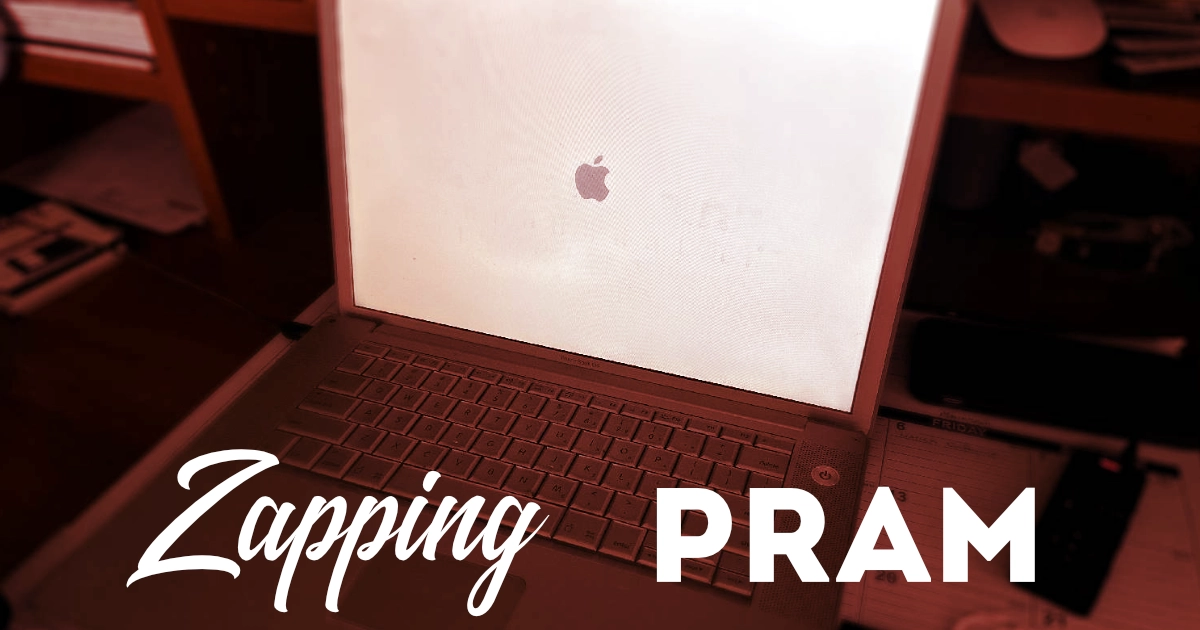Zapping the PRAM
One Way to Fix an Old Macintosh

I have an old PowerBook G4 laptop that isn't booting; it keeps restarting. One trick I learned long ago for such situations is to zap the PRAM, which often helps with boot issues on older computers.
For those unfamiliar, PRAM stands for Parameter RAM, a small amount of memory on Macs that stores certain system settings that are preserved even when the computer is turned off. These settings include things like speaker volume, time zone, and startup disk selection.
What Does "Zapping the PRAM" Mean?
To "zap" the PRAM means to reset it to its factory default settings. This process was often recommended by tech support or savvy users back in the day when a PowerBook behaved erratically or failed to boot up correctly. Here's how and why you might do it:
The Why:
- Fix Boot Issues: If your PowerBook won't start or gets stuck at a chime or screen, resetting PRAM might clear whatever setting is causing the hang-up.
- Reset Settings: If you've tinkered with settings too much or if they've become corrupted, zapping PRAM can restore them to their default, often solving issues related to sound, time, or display.
- Troubleshooting: It's a basic troubleshooting step that might resolve minor software glitches without needing to reinstall system software.
The How:
Here's the step-by-step process to zap the PRAM on a PowerBook:
Shut Down: Turn off your PowerBook completely.
Start Up: Turn it back on.
Hold Keys: Immediately after you hear the startup chime, press and hold down the Option, Command, P, and R keys simultaneously.
Wait: Keep these keys held down until the machine restarts and you hear the startup chime again. Release the keys after the second chime.
What Happens When You Zap PRAM?
- Default Settings: Your PowerBook will boot with all PRAM settings reset. This means you might need to reset your clock, adjust your volume, or choose a startup disk again.
- Potential Fixes: Often, this simple reset would fix issues like incorrect time display or speaker volume not changing, which are controlled by PRAM.
The Cultural Impact of PRAM Zapping
For tech enthusiasts and professionals of the '90s and early 2000s, zapping the PRAM was almost a rite of passage. It was one of those arcane bits of knowledge that made you feel like you had insider access to the machine's workings. This practice highlights an era where user access to system-level tweaks was more common before everything became streamlined and often hidden behind GUIs.
Why It's Less Common Today
Modern Macs no longer use PRAM in the same way. With the advent of NVRAM (Non-Volatile RAM) and subsequent technologies, the need to manually reset such settings has decreased. Today's macOS handles many of these settings through higher-level operations, reducing the frequency of such manual interventions.
Conclusion
Zapping the PRAM on a PowerBook was more than just a technical procedure; it was a part of the lore of early personal computing. It symbolized a time when users had more direct interaction with their machines' inner workings. For those nostalgic for those days or curious about historical computing practices, understanding and perhaps even trying (on an old machine) this process can offer a glimpse into the tactile, almost ritualistic side of computing history. Remember, however, always approach such operations with caution, especially if they involve vintage hardware that might be sensitive or valuable.
